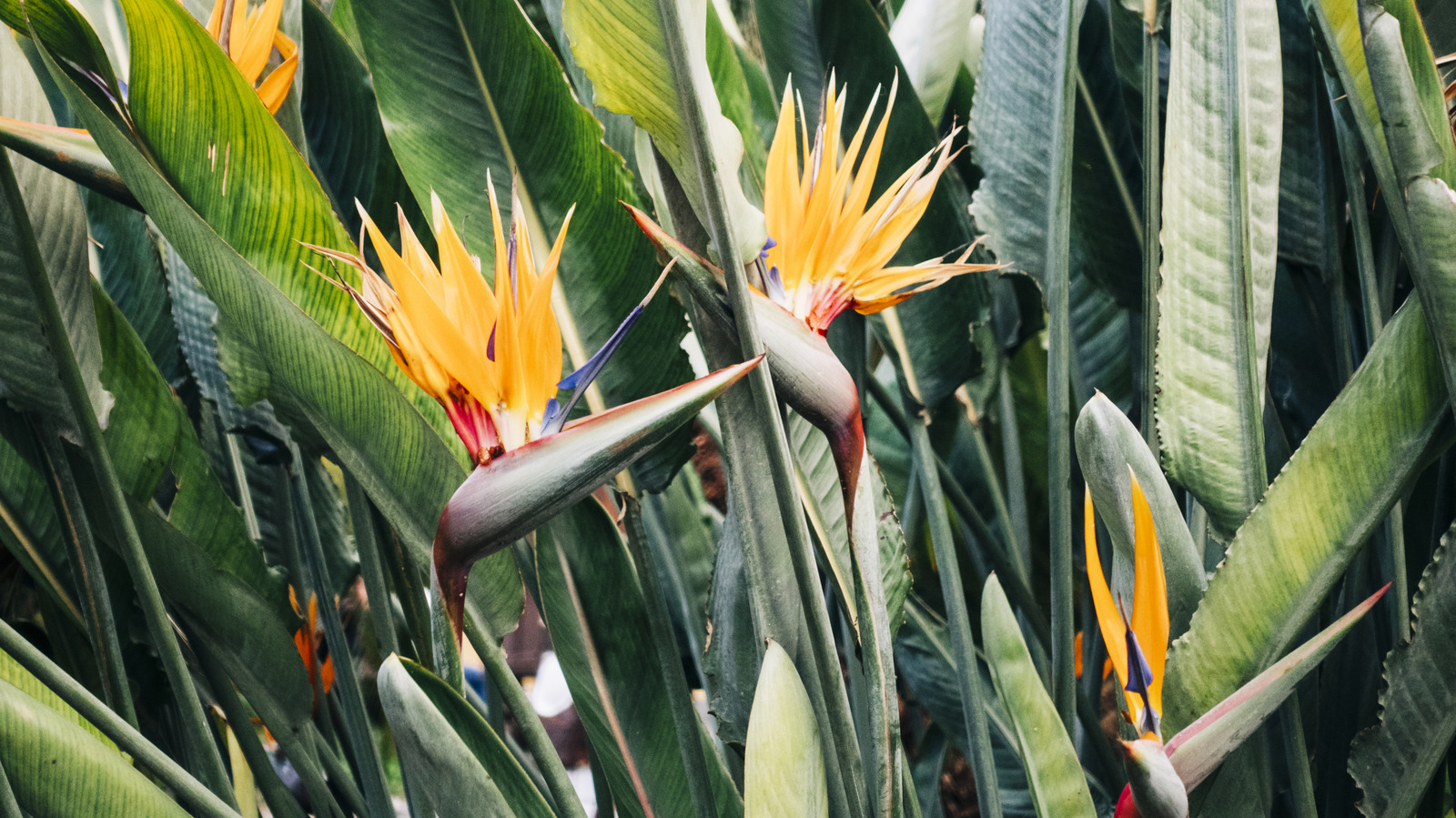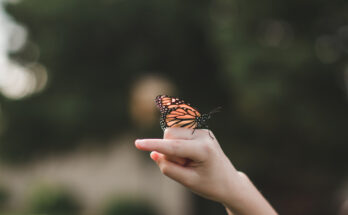12 Unique Looking Plants That Resemble Animals (& How To Grow Them)
The wide and varied world of the animal kingdom is home to some truly impressive displays, from vibrant bird and insect wings to brilliantly scaled lizards and uniquely patterned mammals. Luckily for animal lovers, bringing these amazing aesthetics to your home or garden is much easier than building an entire zoo; instead, you’ll just need to explore your local plant nurseries. There are dozens of unique-looking plants that resemble animals, and while some require more maintenance than your average houseplant, all can thrive with the right care.
While you may need to squint a bit to see how certain plants look like animals, such as gaura flowers, others have a resemblance that is fantastically stark, like bee orchids. There are a few different reasons a plant might look like an animal. Sometimes it’s purely a result of humans projecting our imagination onto flowers and foliage, but in many cases, it’s an example of the plants using mimicry to attract pollinators like bees. That means that planting an animalistic flower in your yard won’t only create an amazing centerpiece — it can also help your entire garden thrive thanks to the extra pollination.
Dolphin plant
Whether you call it a dolphin plant, string of dolphins, or Senecio peregrinus, there’s no doubt that this whimsical succulent is a must-have for any fan of marine life. Grown best in USDA hardiness zones 10 and 11, the dolphin plant has plump, curved leaves that resemble dozens of little dolphins. It grows similarly to the string of pearls succulent, in that it will eventually drape over its pot, allowing the dolphins to seemingly soar through the air. Dolphin plants need to be kept in well-draining soil out of direct sunlight, and thoroughly watered once a week.
Bee orchid
Orchids come in many shapes and colors, and there are several that look like animals, such as the bee orchid (Ophrys apifera). Its center looks remarkably like a bee — specifically, a female bee to trick male bees into pollinating the flower. Bee orchids grow well in temperate areas and are hardy in zones 6 to 9. They prefer rich, well-drain soil, partial sun, and minimal watering, making them a great choice in a garden of other low-maintenance wild flowers. For the best results, make sure to read up on everything you need to know about orchids before planting.
Gaura
Oenothera lindheimeri, also known as bee blossom, wand flower, and white gaura, looks like a swirling flock of white butterflies when in full bloom. One cultivar with pronounced butterfly flowers is called ‘Whirling Butterflies.’ Found in prairies throughout the southeastern United States, gaura is hardy throughout zones 5 to 9. If you want to line your fence or patio with these fantastic flowers, look for a space with slightly acidic, well-draining soil and full sun. Gaura will need enough water to keep it from drying out, but is generally a drought-resistant flower.
Fly orchid
Another interesting orchid that mimics an insect is the fly orchid (Ophrys insectifera). Its center has two antenna-like tendrils, with a dark brown lower petal shaped like the back of a bug. Like with other orchid copycats, this design is intended to attract pollinators. Native to the woods and fields of Europe, fly orchids are hardy in the US through zones 5 to 9. The flowers do well in a range of soil types, and prefer partial to full sun. Fly orchid’s soil needs to be moist, so be sure to water regularly.
Bird of paradise
The ostentatious blooms of a Strelitzia reginae, or a bird of paradise flower, may be intimidating to novice horticulturists, but these plants actually aren’t difficult to make thrive. Hailing from hot southern Africa, the bird of paradise is heat and drought tolerant, and grows hardy in zones 10 to 12. With nutrient-rich soil and frequent watering, these flowers can grow in full sun or partial shade. Since they are so adaptable to a range of conditions, birds of paradise are also easy to grow in a container so you can bring their brilliance into your home.
Monkey face orchid
Surprisingly, flowers in the Dracula genus do not resemble bats or vampires, but monkeys. Monkey face orchid species like Dracula astuta or Dracula cordobae almost all have a peculiar set of markings at their center that strongly resembles a monkey’s eyes and snout. Sometimes, the brown, pink, and white shades of the petals will even align to look like a monkey’s fur. A flower’s exact needs vary from species to species, but Dracula flowers are generally hardy from zones 9 to 11, and need weekly watering, indirect sun, and rich soil.
Red butterfly wing
The taller the eye-catching leaves of a red butterfly wing plant (Christia vespertilionis) grow, the more wind it will catch, and the more it will shake like a group of fluttering butterflies (perhaps making it the perfect companion for butterfly gaura). Preferring the warm temperatures of zones 10 and 11, this plant is tolerant of heat and humidity, and can grow in any level of sunlight. It only needs regular watering, and it can thrive as a houseplant or alongside other ground cover plants that thrive in the sun.
Bunny succulents
Potentially one of the most adorable plants around, the bunny succulent (Monilaria moniliformis) features two rounded leaves growing out of a single circular stalk. This arrangement makes each nodule of the succulent look like a pair of bunny ears, and as the plant grows, the ears get longer and longer. Like many other succulents, Monilaria moniliformis is sun-loving and drought tolerant, though it still appreciates well-drained soil. Bunny ear succulents grow hardy in zones 10 and 11, where they can be grown outside in warmer climates.
Green birdflower
Also known as Crotalaria cunninghamii, the green birdflower is a medium-size shrub that grows best in the full sun and heat of USDA hardiness zones 9 to 11. It gets its name from its large, leathery, light green flowers that are folded in such a way that they look like clusters and rows of little hummingbirds. Along with plenty of direct sunlight, these shrubs need to be maintained in moist, rich soil, and need regular watering. To make your birdflower feel more at home, try out this landscaping trick to attract more hummingbirds to your yard.
Black bat flower
For those with a taste for the macabre, there’s the black bat flower (Tacca chantrieri). Even if you can’t quite figure out how the black leathery leaves and long whiskery tendrils come together to form a batty visage, this slightly off-putting, one-of-a-kind plant can still add plenty of interest to your home or garden. As with other tropical blooms, bat flowers grow best in the warm climates between hardiness zones 9 and 11. Like their namesake, bat flowers prefer indirect sunlight. They also require frequent watering to keep their soil damp.
White egret orchid
To round out your collection of orchids that look like animals, pick up a bouquet of white egret orchids (Habenaria radiata). With its stark white petals outstretched and feathered, one can easily see the similarities between this orchid and a flying bird. White egret orchids are versatile and hardy through zones 6 to 10, and can withstand a range of light conditions. However, you will have to take care to give the flower a proper mix of nutrient-rich, loamy soil, and water it regularly so it stays perpetually moist.
Cobra lily
Like its namesake, the cobra lily (Darlingtonia californica) is carnivorous, but unlike real snakes, this flower consumes its prey by luring insects into its tubular, water-filled insides. The plant gets its name from its appearance, not its eating habits; its large leaves create a hood-like structure over the plant’s opening. Cobra lilies can be strenuous to care for, especially considering that you’ll have to source a supply of insects. But passionate plant parents can still help this vicious plant flourish in hardiness zones 7 to 10 by keeping it in rich, moist soil and full sunlight.



